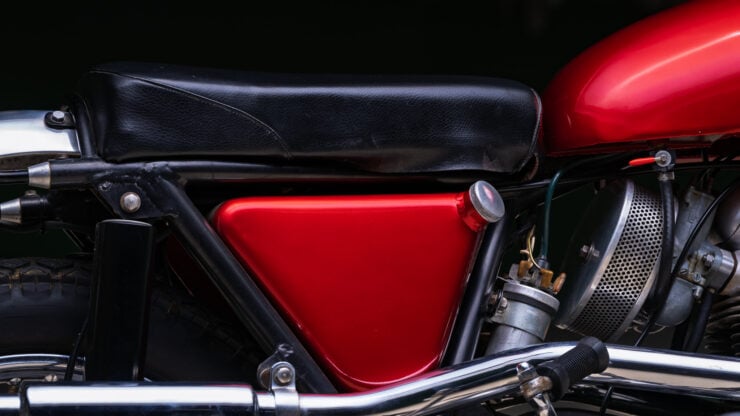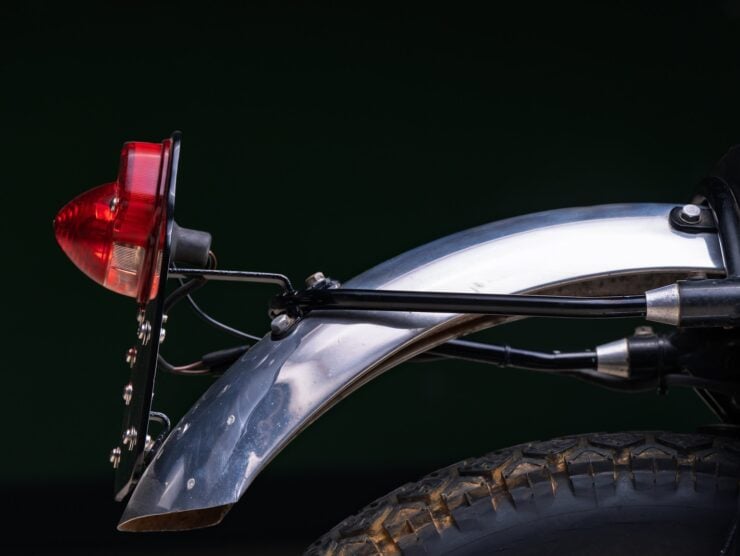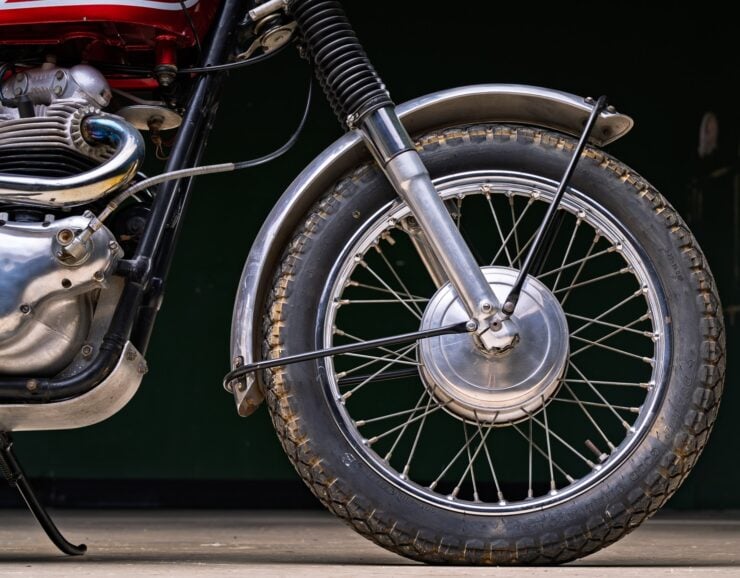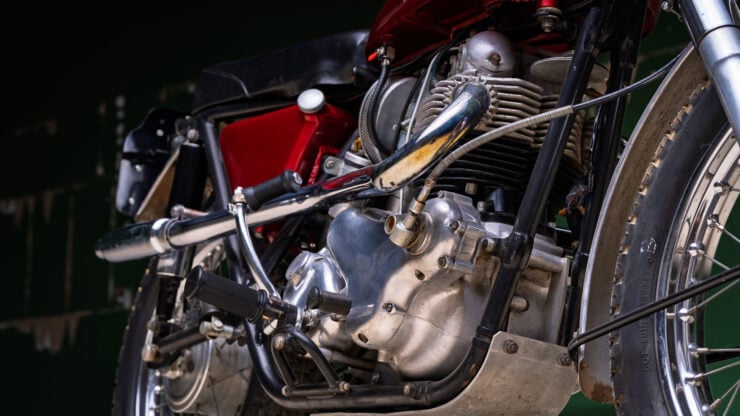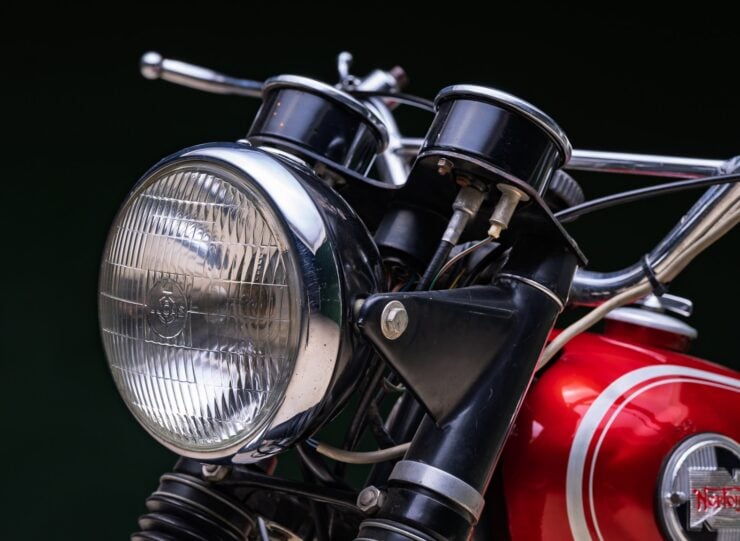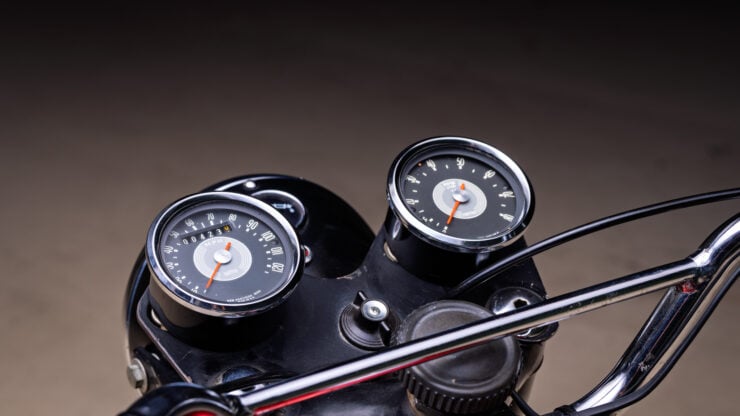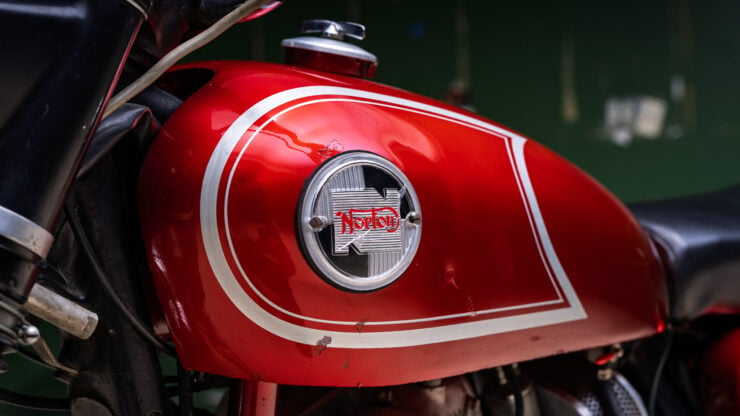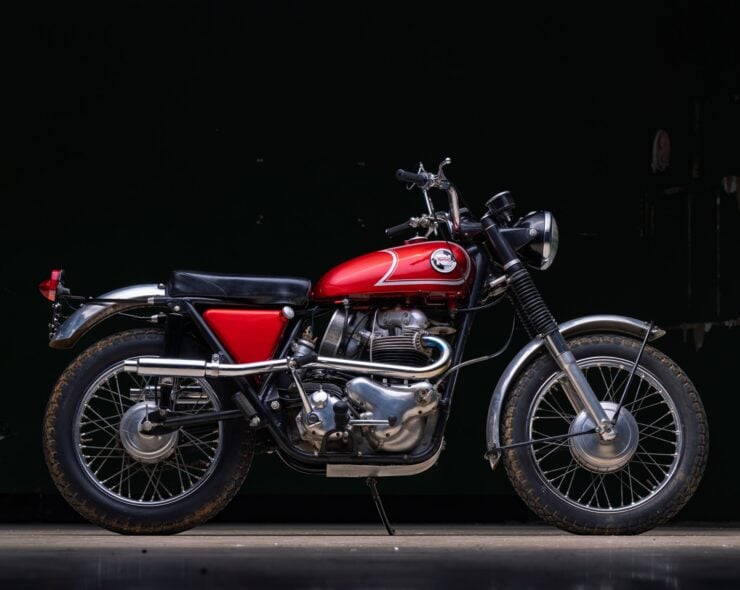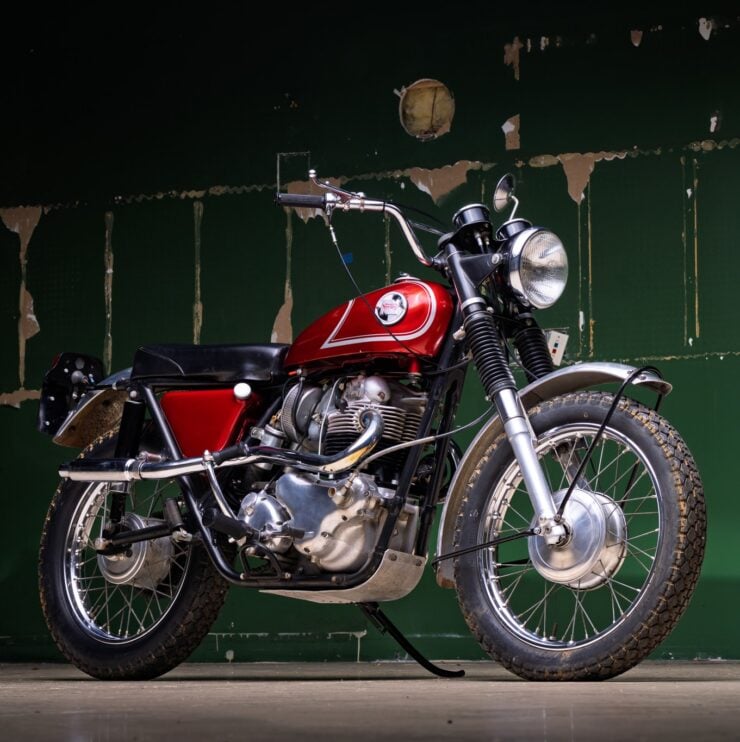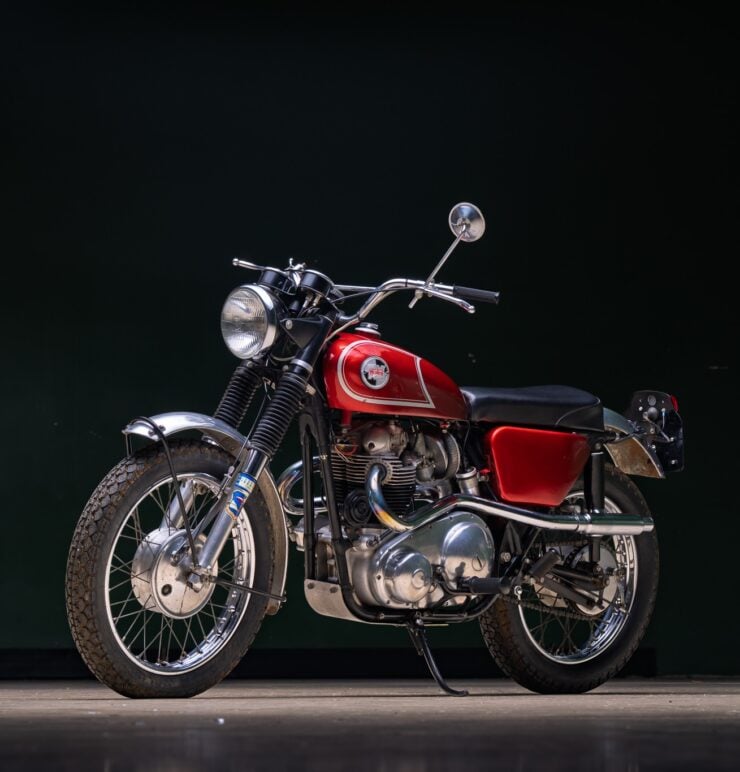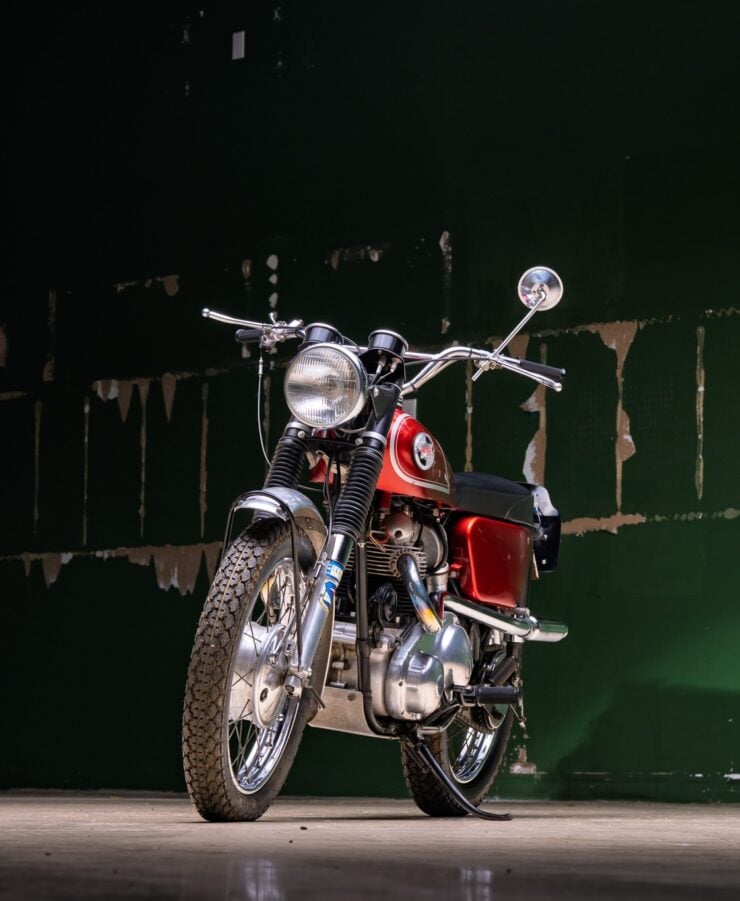This is an original Norton P11 from 1967, the first year of production. It benefits from a full refurbishment and the engine received a mechanical overhaul in 2018.
The Norton P11 was developed to challenge the dominance of the Triumph TR6C “Desert Sled” and other similar British scramblers like the BSA Spitfire Hornet. It was developed by using a lightweight Matchless G85CS frame and the torquey Norton Atlas engine, creating a formidable off-road race bike.
Fast Facts: The Norton P11
- The 1967 Norton P11 was born out of urgency, combining a Norton 750cc Atlas twin with a lightweight Matchless G85CS frame. Originally proposed by California dealer Bob Blair and adopted by AMC and Berliner Motor Corp, it created a powerful, competitive scrambler specifically targeted at the American desert racing market.
- Designed to rival Triumph and BSA offerings, the P11 featured high pipes, aluminum fenders, and minimal street gear. With 55 bhp and a curb weight of 368 lbs – 40 lbs lighter than the Norton Atlas – it offered excellent off-road performance and quickly earned a reputation for its capability in the right hands.
- Several variants followed, including the P11A and Ranger 750, which introduced refinements like a central oil tank and larger fuel capacity. AMC had already experimented with Norton-Matchless hybrids under other badges like the G15CS and N15CS, but the P11 stood out as the most purpose-built desert sled in the line.
- Production ended in 1969 as Norton shifted to the Commando, a model better suited for modern road use. The P11 helped Norton maintain US market presence during a critical period and remains a prized example of Anglo-American desert racing ingenuity. This example is a refurbished 1967 model offered for sale in Arizona.
History Speedrun: The Norton P11
By the mid-1960s, the British motorcycle industry was under pressure. Triumph and BSA were fighting tooth and nail for the American market, where desert racing and off-road ability had become major selling points. Norton, operating under the declining umbrella of Associated Motor Cycles (AMC), had lost much of its competitive edge. But in 1967, a stopgap solution appeared: the Norton P11.
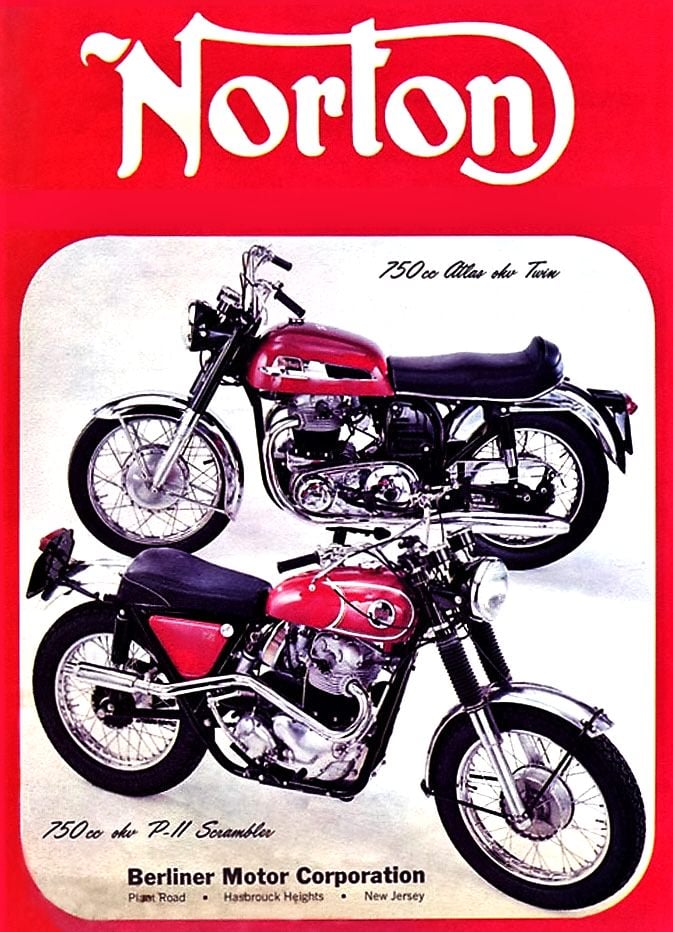

Built for speed, simplicity, and the California sun, the Norton P11 was a hastily (but very cleverly) engineered hybrid that used parts from both Norton and Matchless production bikes to produce a motorcycle capable of chasing down Triumph twins on the Mojave.
By 1966, AMC was struggling to stay afloat. The Plumstead-based group, which included Norton, Matchless, and AJS, had long relied on a series of parallel twin roadsters and off-road singles. But sales were dwindling, especially in the all-important US market.
The Matchless G85CS, a 500cc scrambler built for competition, had proven competent but was increasingly outgunned and simply didn’t have the power to stay competitive. Meanwhile, Norton’s 750cc Atlas twin had plenty of power and excellent torque characteristics, but was saddled with heavier Norton Featherbed frames designed for road-riding.
It was around this time that Californian Norton distributor Bob Blair had the idea of combining the Norton Atlas 750 twin with the lightweight chromoly Matchless G85CS frame. It was a stroke of genius.
The bike was built up using a number of other lightweight components, resulting in a final curb weight of 167 kgs (368 lbs), 18 kgs (40 lbs) less than the 185 kgs (408 lbs) of the Norton Atlas.
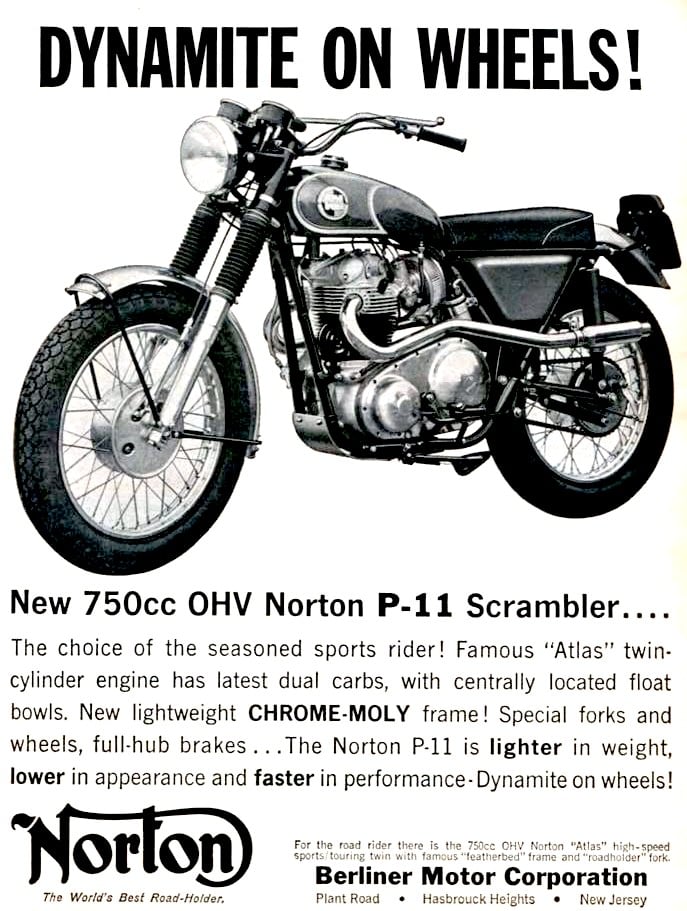


American importer, the Berliner Motor Corporation stepped in with a proposal to AMC, based directly on Bob Blair’s work. The American market wanted desert-ready bikes with big engines and lightweight frames, so Berliner asked AMC to create a production bike with the Atlas twin and the Matchless G85CS frame. AMC engineers created their own prototype version in Britain, and it was deemed worthy for production – thus the Norton P11 was born.
The Norton P11 Is Released
Released in 1967, the Norton P11 had high pipes, minimal street gear, and aluminum fenders – just enough equipment to be road legal, but clearly meant for the dirt. The engine produced around 55 bhp and thanks in no small part to its low weight, it was a capable performer in wide-open terrain.
The original P11 was followed by several revisions – the P11A added a central oil tank and slightly revised frame geometry, while the Ranger 750, released in 1969, marked the final iteration. The Ranger was a little more refined and street-friendly, with a larger fuel tank, improved air filtration, and more polished styling, but it retained the high-mounted exhaust and desert scrambler feel.
The Norton P11 wasn’t the first (or only) AMC hybrid. As early as 1964, AMC had been dropping the Atlas twin into Matchless-style duplex cradle frames for other export models. These included the Matchless G15, AJS Model 33, and Norton N15CS.
These machines, sold mostly in North America, were built from shared components and varied (primarily) by badging and trim. The N15CS and G15CS were competition-oriented, while others like the G15 Mk2 leaned more toward road use.
Assembly of these models took place at AMC’s Plumstead Works until operations were moved to the Norton facility in Andover following AMC’s collapse in 1966. From that point, the hybrid models, the P11 included, were largely built in Norton’s facilities under the newly formed Norton-Villiers Ltd.
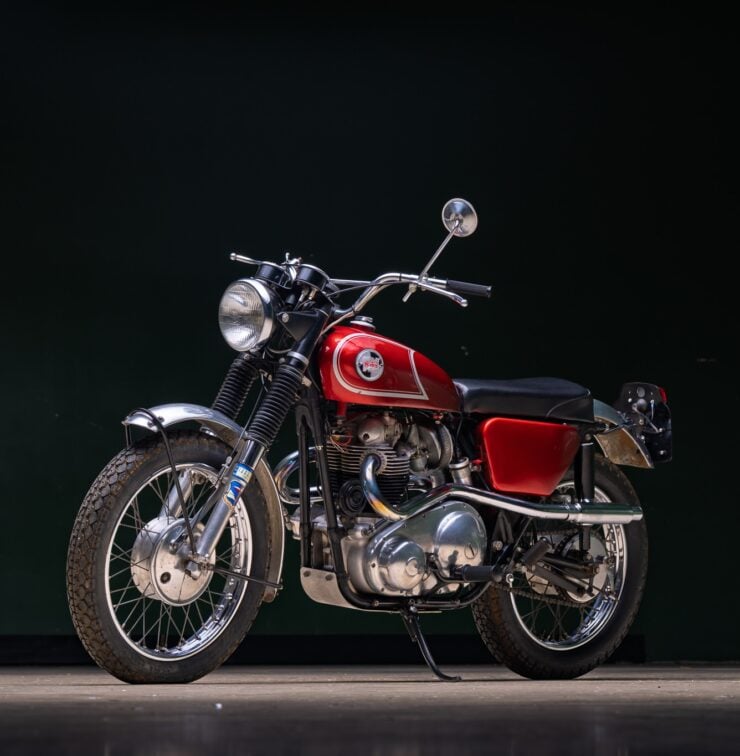


The End Of The P11 And The Arrival Of The Commando
Production of the P11 and its derivatives ended in 1969, as Norton shifted its full attention to the new Commando series. By this time the lightweight two-stroke enduro motorcycles from companies like Husqvarna were beginning to dominate the off-road racing scene, and the writing was on the wall for the comparatively-heavier P11.
The Commando had a more modern, vibration-isolating “Isolastic” frame and quickly replaced Norton’s other twins in the lineup. The Commando went on to become one of Norton’s most iconic machines, but it owed part of its momentum to the P11, which kept the brand visible in America during a critical transition period.
The 1967 Norton P11 Shown Here
This is a 1967 Norton P11 that remains in remarkably original-spec, though it does benefit from a refurbishment, and the engine received a mechanical overhaul in 2018.
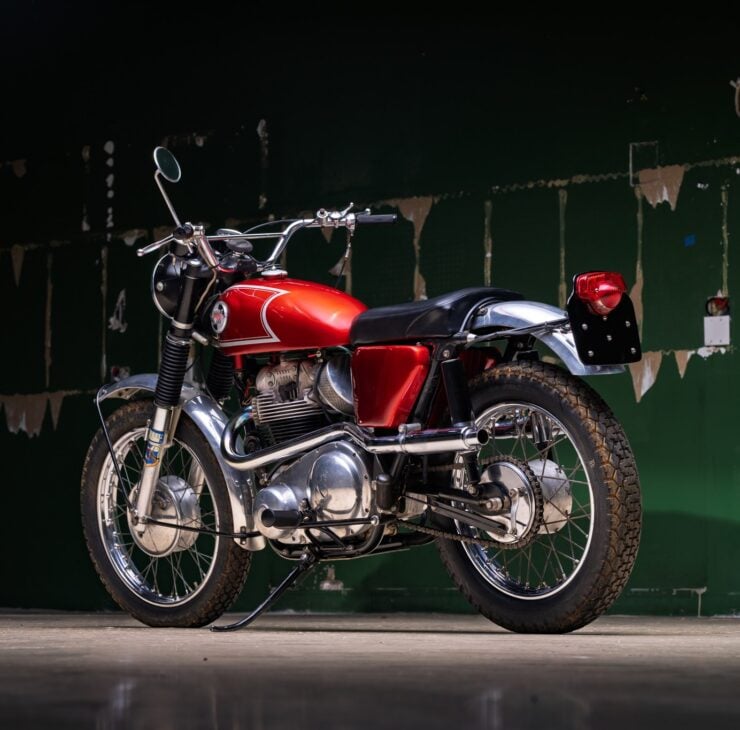


The bike is finished in a period-correct paint scheme, and it retains the small fuel tank, high scrambler-style exhausts, single-side rear vision mirror alloy fenders, chrome cross-braced handlebars, and even correct tires for the era.
It’s now being sold out of Scottsdale, Arizona with refurbishment and service records, a Vintage Motor Cycle Club works records extract, a period Norton marketing brochure, and a clean Arizona title. If you’d like to read more about it or place a bid you can visit the listing here.
Images courtesy of Bring a Trailer


